Nodes Combine/Separate¶
Tous ces nodes font essentiellement la même chose :
Separate : divise l’image en ses composantes de canal de couleur.
Combine : Re/combiner une image à partir de ses canaux de couleur composite.
Ces nodes peuvent être utilisés pour manipuler chaque canal de couleur indépendamment. Chaque type est différencié dans l”espace de couleurs appliqué.
In compositing and texture context each node supports the Alpha channel. In the texture context only RGB color space is available. In the shading context of the Blender internal adds HSV and the Cycles shading context offers an additional pair of nodes to combine/separate a vector (XYZ).
The Combine nodes could also be used to input single color values. For RGBA and HSVA color spaces it is recommended to use the Node RGB. Some common operations could easier be executed with the Nodes Color.
Nodes Separate/Combine RGBA¶

Node ombine RGBA¶

NOde Separate RGBA¶
Propriétés¶
Ce node n’a pas de propriétés.
Exemples¶
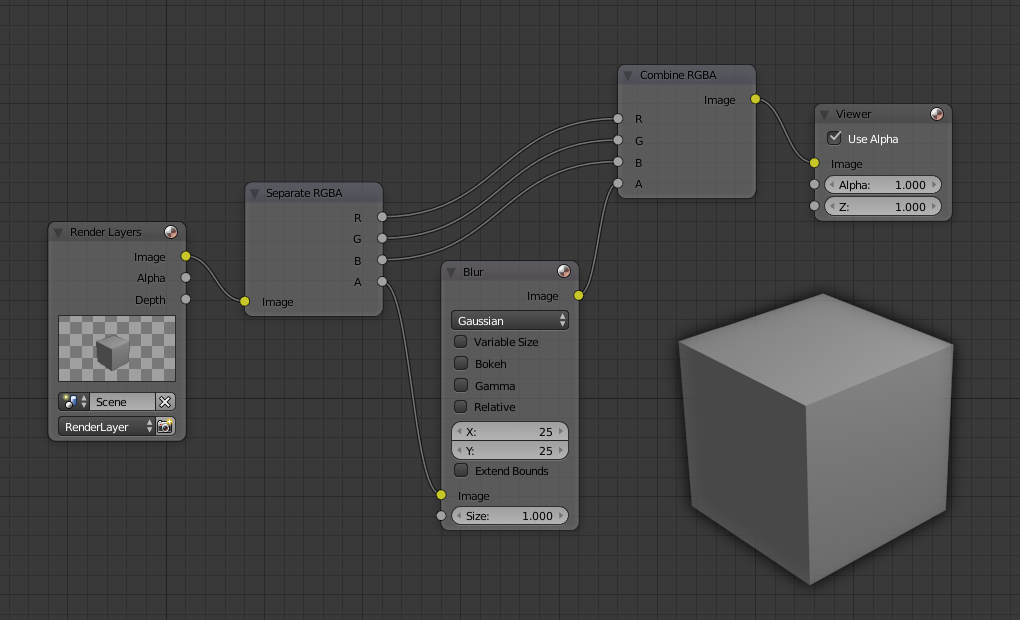
An example of blurring the alpha channel.¶
In this first example, we take the Alpha channel and blur it, and then combine it back with the colors. When placed in a scene, the edges of it will blend in, instead of having a hard edge. This is almost like anti-aliasing but in a three-dimensional sense. Use this node setup, when adding CG elements to live action to remove any hard edges. Animating this effect on a broader scale will make the object appear to « phase » in and out, as an « out-of-phase » time-traveling sync effect.
Nodes Separate/Combine HSVA¶
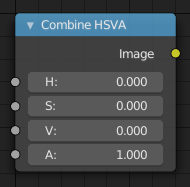
Node Combine HSVA.¶
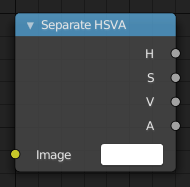
Node Separate HSVA.¶
Propriétés¶
Ce node n’a pas de propriétés.
Nodes Separate/Combine YUVA¶
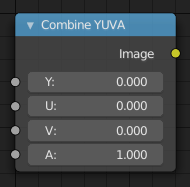
Node Combine YUVA.¶
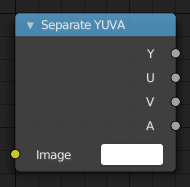
Node Separate YUVA.¶
Input/Output¶
- Image
Entrée / Sortie image standard.
Y (Luminance)
U (U chrominance)
V (V chrominance)
A (Alpha)
Propriétés¶
Ce node n’a pas de propriétés.
Nodes Separate/Combine YCbCrA¶
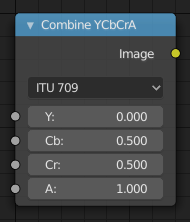
Node Combine YCbCrA.¶
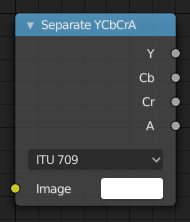
Node Separate YCbCrA.¶
Input/Output¶
- Image
Entrée / Sortie image standard.
Y (Luminance)
Cb (Chrominance Blue)
Cr (Chrominance Red)
A (Alpha)
Propriétés¶
- Mode
ITU 601, ITU 709, Jpeg
Exemples¶

Un exemple de la mise à l’échelle du canal de luminance.¶
Cet exemple a un node Math (Multiply) augmentant le canal de luminance (Y) de l’image pour la rendre plus lumineuse.
Astuce
If running these channels through a Color Ramp node to adjust value, use the Cardinal scale for accurate representation. Using the Exponential scale on the luminance channel gives a high-contrast effect.